🎧Pea-nut, peanut butter, and jelly.🎧 Barney sang it, and so do the Boy Scouts. Peanut butter and jelly sandwiches are, after all, a Made in America sandwich.
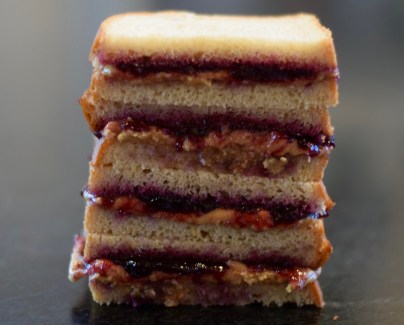
Growing grapes last year led to me making my first batch of grape jelly, the thought of which brought me back to my childhood, and an Internet rabbit hole of learning the history of the PB&J sandwich. Portions of this history of the PB&J sandwich were first described in another post I wrote, How to Make Grape Jelly (and grow the grapes).
1843: Horticulturist, Ephraim Wales Bull, chose a wild grapevine that thrived in his backyard, to begin work on cultivating a purple grape that would grow well in harsh New England weather.
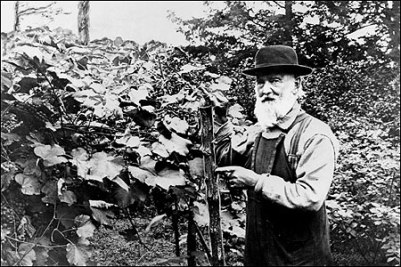
1854: After many years of research, Bull developed a cultivar he liked and named it the Concord grape after his hometown of Concord, MA. He sold his vines for $5 each and made a small fortune as Concord grapes became a popular strain. Since plant varieties were not patent-protected at the time, nurserymen were free to grow and sell their own plants made with cuttings from his original vine and Bull died a poor man. Here is a good story about it. His gravestone read: “Ephraim Wales Bull, the Originator of the Concord grape . . . He Sowed Others Reaped.” I digress.
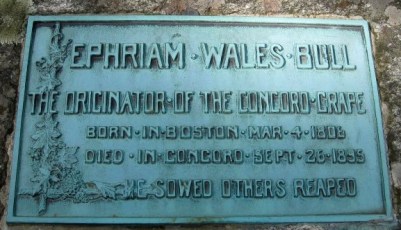
1869: Dentist and clergyman, Dr. Thomas Welch, sought to create a non-alcoholic communion wine for his parishioners using the newly popular Concord grape. In his home kitchen, Dr. Welch prepared a batch of grape juice, bottled it, and using the new sterilization technique developed by Louis Pasteur, he pasteur-ized it. Pasteurization killed the yeast which would have created fermentation. Welch marketed the juice as “Dr. Welch’s Unfermented Wine.” Grape juice became popular for years to come with the ongoing Temperance Movement and later with Prohibition.

1880: Dr. Ambrose Straub, another physician, who, in an attempt to get calories into his elderly patients who were unable to chew meat, started crushing peanuts into a nutritious peanut paste. Now, the Aztecs made a peanut paste hundreds of years before, but it was Straub who ran with the idea of a peanut butter product. Oh, and George Washington Carver, the famous botanist, and inventor, he was responsible for encouraging sharecroppers to grow alternative crops to cotton, such as peanuts and soybeans. Carver then went onto to invent and demonstrate hundreds of uses for peanuts to help increase demand for the product. He is considered by many to be the father of the peanut industry.
1893: Dr. Straub attended the Chicago World’s Fair to hawk his peanut paste for medicinal uses. Concurrently, Dr. Thomas Welch’s son, Dr. Charles Welch, brought his new product, Welch’s Grape Juice, to the Fair to introduce it to the masses. Thousands of people sampled these two new products. Little did Drs. Straub and Welch know that together, their products would one day lead to the most popular sandwich in America.
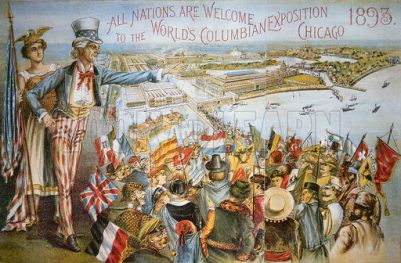
1901: Ms. Julia Davis Chandler, a writer for The Boston Cooking-School Magazine of Culinary Science and Domestic Economics, may have been the first person to introduce the peanut butter and jelly sandwich to the nation. She wrote, “For variety, some day try making little sandwiches, or bread fingers, of three very thin layers of bread and two layers of filling, one of peanut paste, whatever brand you prefer, and currant or crabapple jelly for the other. The combination is delicious, and as far as I know, original.” Imagine PB&J as an elegant tea sandwich.


1903: Dr. Straub invented the peanut mill and took out a patent on it. He sold all commercial rights to the peanut spread to Mr. George Bayle, owner of Bayle Food Products, who became the first commercial vendor of peanut butter. Straub continued to perfect his grinding mills. Mr. Bayle took his “peanut butter” product to the St. Louis World’s Fair in 1904 and sold out in three days.

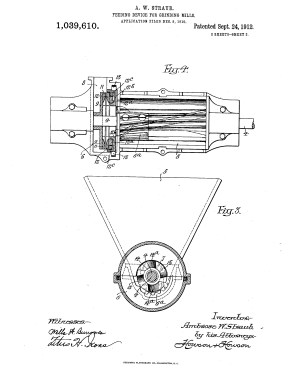
1918: The Welch family developed a grape jam spread and called it Grapelade. 100% of their initial production was bought by the military for WW1 soldiers’ meal rations. After the war, the soldiers, now civilians, requested more grape jam for home use and in 1923, Welch’s introduced Concord Grape Jelly to meet that increased post-war demand.
1928: “The best thing since sliced bread.” Otto Frederick Rohwedder, an engineer from Davenport, Iowa, invented the bread-slicing machine that automated the production of pre-sliced bread in commercial bakeries.
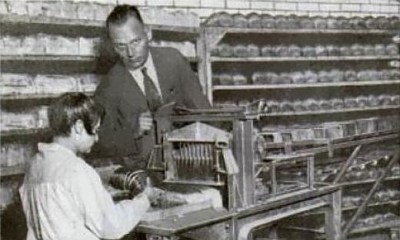
1930: Wonder Bread started selling the sliced bread commercially. This surely helped lead to the rise of sandwich-making in the American household.
1929-1939: During The Great Depression, PB&J sandwiches were commonplace in school lunch boxes. Jelly was sweet and wet and was the perfect companion to help peanut butter not stick to the roof of the mouth. It also wouldn’t spoil unrefrigerated in a lunchbox, another bonus. More importantly, the sandwiches were nutritious, and children liked them. With the automated production of peanut butter, jelly, and pre-sliced bread, the PB&J sandwich was on its way to becoming a very popular sandwich.
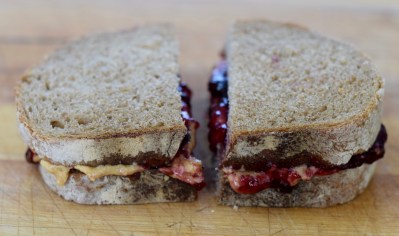
1941-1945: During WW2, at least half of Welch’s production of grape juice and jelly were earmarked for the military and hospitals. Both peanut butter and jelly were part of the U.S. soldier’s meal rations. Soldiers came to rely on peanut butter and jelly sandwiches for meals in the field. Take a look at this video created by Steve1989, who reviews MRE’s and Rations on YouTube. This one on RCI (Ration, Combat, Individual) rations from the Korean War shows you what it was like to eat peanut butter and jelly while in the field.
Squirm alert: it is almost impossible to watch this video without wanting to yell at the kid and tell him not to eat that jelly!
Post War: Peanut butter and jelly sandwiches became even more popular as thousands of soldiers returned to civilian life and continued to want PB&J sandwiches.

1962: I’ll close with this memorable Welch’s Grape Jelly ad featuring The Flintstones, a cartoon that was popular on Saturday mornings during the Sixties when I was growing up.
Afterschool snack for my six brothers in the Seventies. Nice memories!
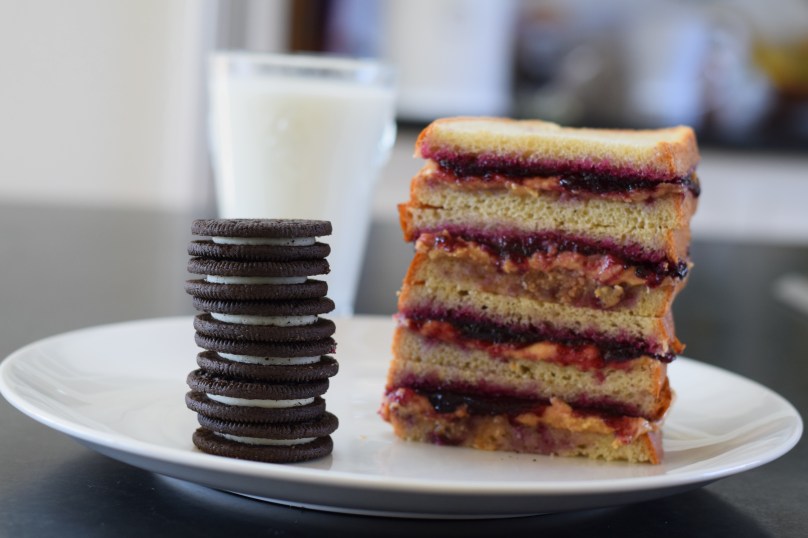
LET’S STAY CONNECTED!
Follow my photos of vegetables growing, backyard chickens hanging out, and dinner preparations on Instagram at JudysChickens.
Never miss a post: sign up to become a follower of the Blog.
© 2014-2017 Judy Wright. All rights reserved. Photos and text may only be used with written consent.


What fun! And yes, I think I remember that commercial from 1962.
Gloria, just hearing the music brings you back, doesn’t it?! Judy
Delightful post, Judy! So many interesting stories. And now I am craving a tall glass of Concord Grape juice.
Thanks, Quinn! It’s amazing how your brain works simply by association — I can almost taste that juice just thinking about your comment!
Neat history! Warren much prefers apple jelly with his PB&J, but I grew up with grape. Welch’s, of course.
Me, as well! Did you collect the Flintstones juice glasses, too?!
I knew the song. I knew about the peanut butter and George Washington Carver (1880 paragraph) but mercy, there’s a lot here I DIDN’T know. Thanks for the education.
Thanks, Mimi! A deep blogger rabbit hole! It was so interesting though!😃
Thanks for the history lesson on the PB&J, arguably one of the most brilliant inventions since….sliced bread, I guess.